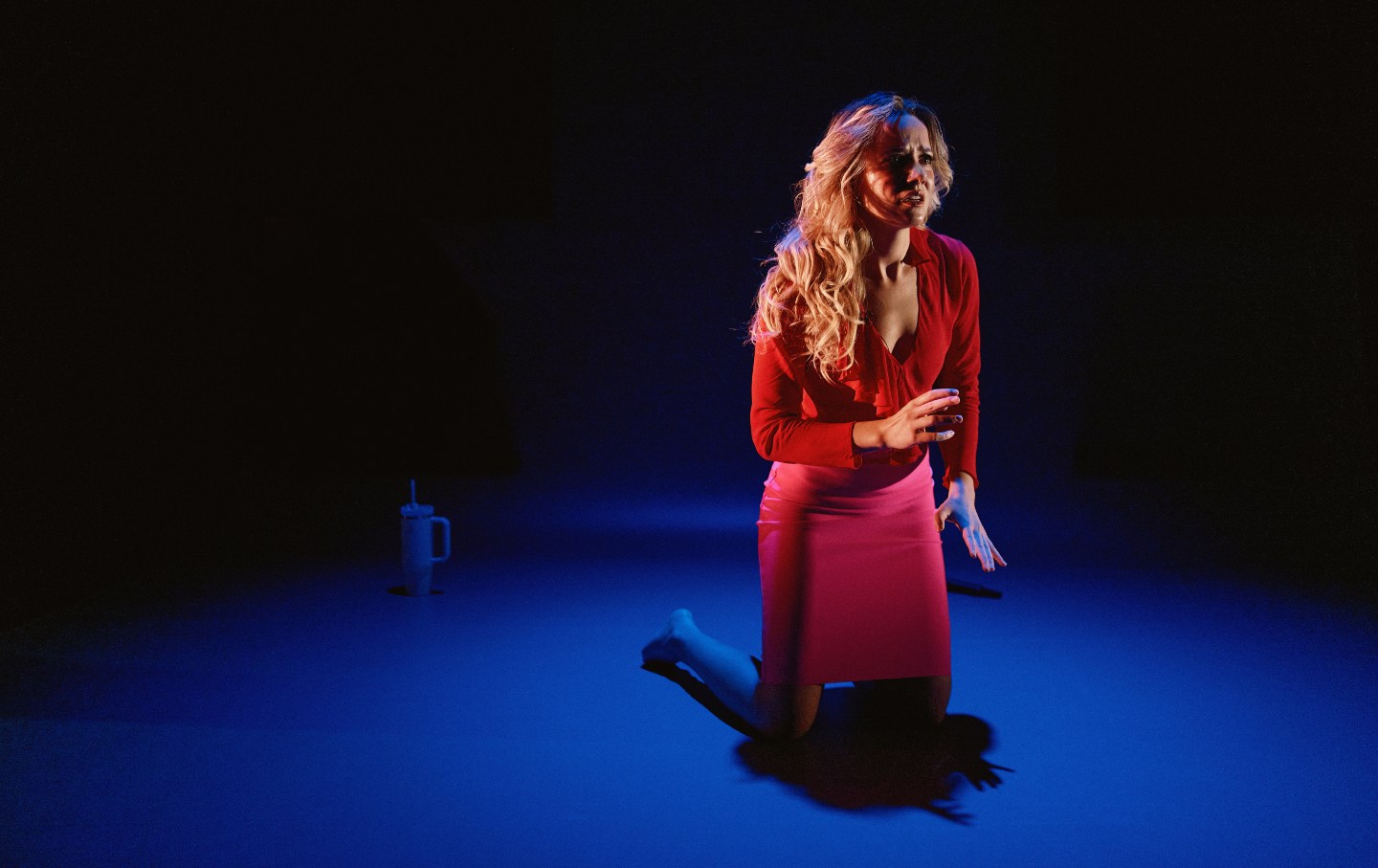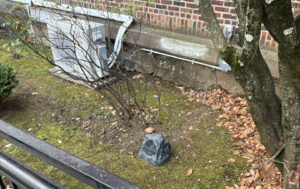September 23, 2025
Does “Weather Girl” Forecast Our Planet’s Future?
By Nic Wong
In the new play by Brian Watkins, a California meteorologist struggles to deliver daily weather reports that whitewash our unfortunate climate reality.

In theory, weather reports should be neutral communications, free from ideological bias or political pressure. In practice, public broadcasting now faces severe federal funding cuts amid a crackdown on independent media and free speech; the terms “climate crisis” and “climate science” are being purged from government documents; and numerous meteorologists have received threats simply for explaining climate science.
In Weather Girl, a new play by Brian Watkins currently being staged at St. Ann’s Warehouse in Brooklyn, the situation is no different. Throughout the stream-of-consciousness-style one-woman show, the audience watches the protagonist fracture under the stress of having to put on a happy face. Stacey, a California meteorologist played by Julia McDermott, struggles to deliver daily weather reports that whitewash our unfortunate climate reality. The state is becoming unbearably hot, burning from intense, year-round wildfires. She eventually pleads for mass evacuation in an on-camera breakdown, yet some refuse to leave their burning homes, deeming the fires a “hoax.”
It’s a salient allegory of not only climate change but also the medley of societal failures that the crisis exposes. I would call the show prescient, yet what makes it so simultaneously haunting and mesmerizing is not its foresight of the future but rather how terrifyingly contemporary its depiction feels. Amid our current polycrisis—defined by the existence of disparate shocks that “interact so that the whole is even more overwhelming than the sum of the parts”—the housing and mental health crises, among others, merge with impending climate catastrophe into an apocalyptic Hydra that swallows both Stacey and the audience members.


